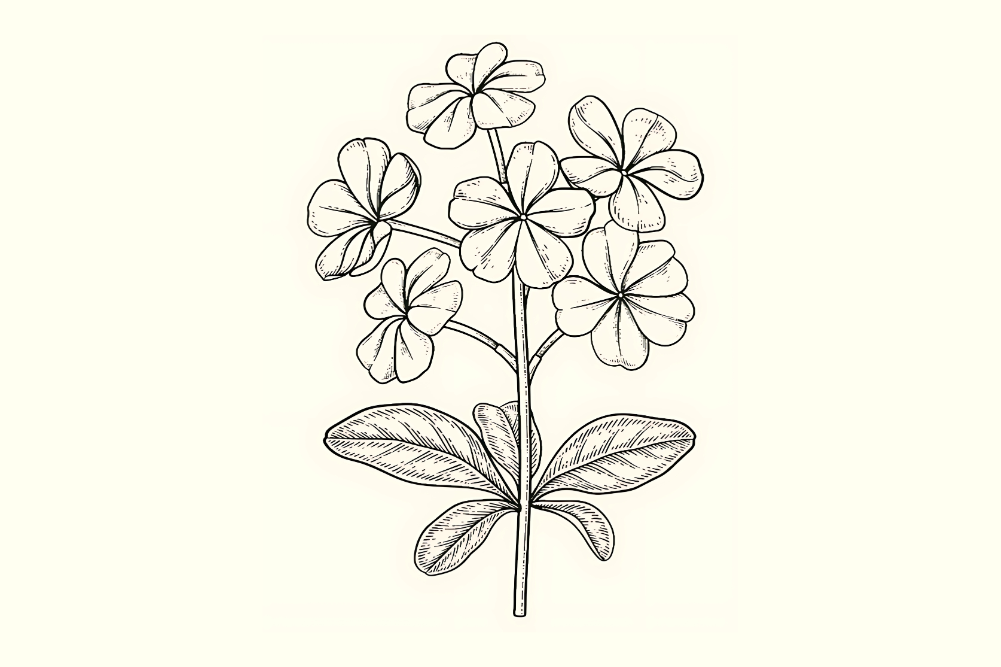Growing fruit & vegetables in small spaces
Many of us grow food for sheer pleasure. Today, cultivating our own edibles has another worthwhile aspect. At the time this article was written, iceberg lettuce was hovering at about $10 each, while broccoli fetched $7 a kilo at the checkout. Stats reported by AUSVEG show a more moderate 7.5 per cent overall price increase in seasonal vegetables across the board over the two years to early 2022. More worryingly, the report calls for a bigger markup to compensate farmers hit with hikes of over 40 per cent in agricultural costs like fertiliser, fuel and freight.
With increasingly higher food costs almost certain — due to the decline in the use of petroleum and gas and the impact of climate change on our food systems — growing what you can at home can help foster resilience. Along with the sense of hope, security and accomplishment in providing for ourselves, it makes good financial sense. Food remains one of our highest ongoing expenses. The 2020 national Pandemic Gardening Survey found edible gardening was particularly important to people on low incomes or struggling with chronic health issues.
Growing more in less space
Few of us live on farms or acreage, but we shouldn’t let that hold us back. Neither do we have to own our own home to grow food. Many people successfully produce food in rental accommodation using mobile growing beds, and in cities by using containers. Another idea is to “borrow” space from someone in exchange for a share of your produce.
Provided you can supply the core needs of plants — sunlight, water and nutritious soil, plus shelter from extreme weather — you can grow some food. To begin, take inventory of your growing space and assess the opportunities.
Most of us have been raised with the traditional idea of growing food in open, square or rectangular garden beds. However, there are many other methods of food production more suitable to those living in urban and suburban settings. Think outside the “square” with these gardening methods that can help you squeeze more edibles into whatever space you have.
Vertical gardening
The idea here is simply to grow up. Walls, fences and trellises are commonly used to support climbing plants, but any vertical surface or structure can be utilised including posts, railings and sheds. Edible climbers include kiwifruit, mini-pumpkin, squash, choko, beans, peas, cucumbers, mini-melons, grapes, berries and passionfruit.
Green walls can be created by training plants onto vertical trellises, frames or lattice. Alternatively, install or purchase a system of vertical planter containers along a wall. Other structures you can make or purchase for maximising the vertical space include arbours, teepees, ladders and pergolas.
Take advantage of any vertical space offered by ledges, balconies or verandahs that might support hanging pots, baskets or trailing vines — however, take into account how much weight any structures can bear.
Also ideal for small spaces are ancient methods of training woody fruit trees against walls and fences. Such techniques use pruning and tying of branches to create various slimline shapes including espaliers, fans and cordons.
Container gardening
Container gardening is ideal for balconies, verandahs and concreted or tiled areas. Container plants can also be positioned to gain growing space on steps, paths, under trees (shade-tolerant plants only), vertically as hanging pots and elsewhere.
To grow food successfully in containers it’s important to have an adequate-sized pot with good drainage and to maintain the health and fertility of the soil. Keep soil moist but not overwatered: potted soil dries out much more easily than earth. As a rule of thumb, shallow-rooted plants like lettuces, shallots, spinach and most herbs need a pot with a minimum 15 centimetres diameter. Most other vegetables need a much bigger and deeper pot and trees need the largest pot of all. In general, the bigger the pot the better. Smaller pots dry out faster and restrict roots, which limits plant growth, flowering and fruiting.
Containers can come in a variety of forms including pots, sacks and baskets. In Kibera, a slum district of Nairobi, many locals have fought back against food insecurity by growing food such as kale, spinach and tomatoes in sacks. These simple but effective growing containers are filled with pebbles for drainage and structure, and a combination of soil and manure.
All containers have their pros and cons. Ideally, they should be non-toxic. Non-porous pots such as plastic and glazed pottery retain soil moisture the most. Plants in porous containers such as terracotta, clay, unglazed ceramic and sacks, and semi-porous containers like wood need to be watered more often. Avoid recycled materials that contain leaded paint or chemicals. Also be aware that black pots absorb more heat.
An attractive potting solution is to use a cachepot, a decorative outer pot used to conceal a smaller pot plant placed inside it. Another nifty idea is putting your containers onto a wheeled platform so they can be moved about.
Fill your containers with a blend of quality potting mix and compost and give them regular tonics such as compost, diluted seaweed solution, biochar, well-rotted manure or rock dust. Monitor and water lightly daily; more frequently on hot days.
Backyard orchard design
Based on the work of Dave Wilson Nursery in California and pioneered by Angelo Eliades in Australia, backyard orchard design is a system for maximising fruit production in small spaces. It uses high-density planting of fruit trees, summer pruning to keep trees small, dwarf varieties and creative use of space including shaping fruit trees into arches, espaliers, standards, hedges and living fences. Fruits suited to hedges include pomegranate, olive, citrus, feijoa, guava, acerola cherry, lilly pilly and Brazil cherry.
By maintaining smaller-sized trees, diverse crops can be enjoyed across the seasons. Trees are planted as closely as 45 centimetres apart (such as three within one spot), or one to two metres apart and shaped together.
Food forests
Food forests are a holistic permaculture concept based on emulating the way natural forests grow with overlapping layers. While best for large land sizes, the concept can be applied to tiny gardens and is particularly useful if you lack space for vegetable beds because of established trees. Stack edibles into the understorey ground, root, perennial and shrub layers. Use edible groundcovers such as strawberries, herbs, warrigal greens, pumpkin, sweet potato and melons. In the woody, herbaceous layer use edible shrubs like blueberries, cranberry, Natal plum, pineapple guava, Chilean guava, goji berry, hazelnut and cacao. When designing a food forest, lower layers should be placed to the north of upper canopies so that all the plants receive sufficient sunlight. Climbing edible vines can also be incorporated.
Ecological niches
A permaculture niche is an opportunity in the garden that helps intensity production from your space. A niche in time concerns when a plant grows and produces best. A niche in space is an area or place in the garden presenting an opportunity to grow something. By capitalising on the combination of a niche in space and time you can fit more in. An example is planting a crop of leeks or other winter-producing plant beneath a deciduous fruit tree. Over the cold months (which is when leeks grow) the tree loses its leaves and sun entering the space can be taken advantage of to grow the leeks. Another example is using a neglected shady spot in summer to grow foods that can thrive with less sunlight such as rocket, spinach, parsley, mint, Vietnamese mint, cress or coriander.
Polyculture
Polyculture is the cultivation of multiple plant species in an area such as a veggie bed. The rationale is that diversity improves soil structure and quality and promotes a variety of insects and microorganisms, in turn improving yield. Polyculture (as opposed to monoculture) also enables those with less garden space to fit in more varied foods. Instead of planting a whole punnet of kale into a bed, for example, plant a variety of different leafy greens.
Favour the fast and furious
Choosing faster-producing and more abundant plants will generate a higher yield from your space. Rocket, English spinach, radishes and lettuces will provide something to munch on in about four weeks. Sprouts produce within about five days and microgreens within 14 days. Another tasty but fast bunch include buk choy and other Asian greens, kale, broccoli, mustards, mizuna, shelling peas, snow peas and parsnips: ready for harvest in up to 50 days. Your next-fastest growers (typically 50 to 60 days till harvestable) include baby carrot, cucumber, beetroot, beans, squash, zucchini and cherry tomato. Herbs, including parsley, coriander and basil are also relatively fast growers. Just be aware that plants grow more slowly in winter due to lower sunlight and therefore less photosynthesis.
If you’re lean on space, avoid planting cauliflower, cabbages, celery, onions and asparagus. These slow-growers hog three to eight months of bed space. Asparagus can take two years to mature. However, if you love the idea of these foods, don’t let that deter you. Another idea is to plant onions between lettuces and in the meanwhile enjoy faster-growing alliums like garlic chives, spring onions and shallots.
Prolific croppers include lettuce, rocket, basil, tomatoes, zucchini, cucumbers, chilli, okra, potatoes, beans, kale, shallots, peas and rhubarb. High-yield fruit and nuts include mulberry, guava, apple, avocado, blueberry bushes and blackberry; and in tropical regions jackfruit, breadfruit, banana, papaya, coconut and macadamia.
When growing for productivity, stick to the plants that grow best in your climate zone. Avoid fussy, hard-to-grow species in favour of what’s more simple. Know your climate zone and check out what thrives in the neighbourhood. Either way, grow what you love to eat. Growing food you don’t eat is a waste of space, time and money.
Know the essentials of growing food
Soil enrichment
Just like humans, plants need nutrition and water, which they predominantly access through the soil. Most beginner gardeners fail to comprehend how important soil structure is. The soil can be thought of as a huge gut. It needs to be in good condition — full of diverse beneficial microorganisms, porous enough to hold oxygen, moist and not too acid or alkaline. The easiest way to build healthy soil is by recycling nutrients through composting. Ideally, prepare any soil prior to planting and continue to feed the soil as plants grow with diluted seaweed solution, well-rotted manures, mineral rock fertilisers and/or compost, organic mulches and other tonics.
Raising new life
Whether you sow your own seeds or plant out seedlings from the nursery, choose the right season for the plant’s life cycle. When saving seeds for creating new plants, collect from the most vigorous, healthy plants.
Siting plants correctly
Plants need to be located according to their needs for sunlight, required for photosynthesis and energy production. Seed germination, flower and fruit production and plant growth require sunlight. A very common reason for an ailing plant is insufficient sunlight. Another aspect of siting plants is making sure they’re spaced adequately apart to avoid competition for nutrients, water, air and sunlight.
Ongoing maintenance
Monitoring and observation is important. Plants need regular soil replenishment and water. Always water the soil at the base of the plant, not the plant itself. Other aspects of maintenance include topping up mulches, weeding and using natural, organic methods for dealing with plant diseases and pests. Fruit and nut trees and vines need annual pruning and training. Plants also need protection from weather extremes like frosts, winds and high temperatures. Soil should never be left bare or overly disturbed: in nature this doesn’t occur and disrupts soil health. Grow cover crops or at least
cover with compost and/or natural organic mulches.
Succession planting
This refers to the staggering of crops by sowing seed or planting seedlings at spaced intervals, such as every fortnight instead of all at once. By doing this plants will mature over a staggered time frame and provide you with an ongoing supply of food. You’ll also get more value out of your growing space. Veggies best suited to succession planting are those that grow over a longer season and that mature quickly. This includes radishes, lettuces, tender herbs like basil and coriander, carrots and cucumbers.
Ongoing education
Most learning is about getting in there and doing it. Learn from other gardeners and your own mistakes and successes and access the world of educational materials on the subject.







